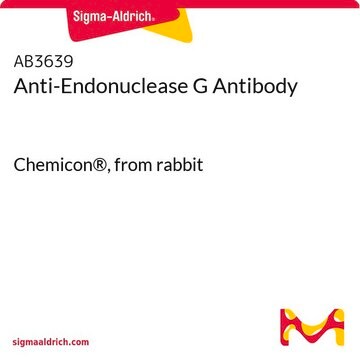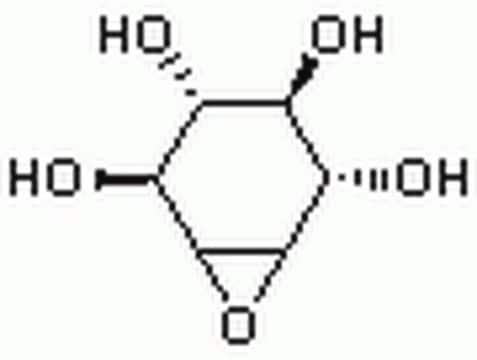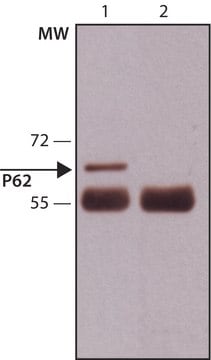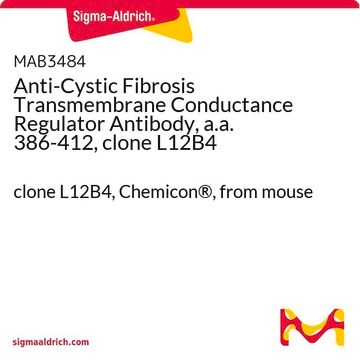AB5935
Anti-Tyrosine Hydroxylase Antibody, phosphoSer 40
Chemicon®, from rabbit
Synonyme(s) :
Tyrosine Monooxygenase
About This Item
Produits recommandés
Source biologique
rabbit
Niveau de qualité
Forme d'anticorps
affinity isolated antibody
Type de produit anticorps
primary antibodies
Clone
polyclonal
Produit purifié par
affinity chromatography
Espèces réactives
avian, rat, mouse
Réactivité de l'espèce (prédite par homologie)
quail (100% sequence homology), nonhuman primates (100% sequence homology), human (100% sequence homology), porcine (100% sequence homology)
Fabricant/nom de marque
Chemicon®
Technique(s)
immunocytochemistry: suitable
immunohistochemistry: suitable
western blot: suitable
Numéro d'accès NCBI
Numéro d'accès UniProt
Conditions d'expédition
dry ice
Modification post-traductionnelle de la cible
phosphorylation (pSer40)
Description générale
Spécificité
Immunogène
Application
A 1:1,000 dilution of a previous lot was used in IH.
Immunocytochemistry:
A 1:1,000 dilution of a previous lot was used in IC.
Optimal working dilutions must be determined by the end user.
Neuroscience
Neurotransmitters & Receptors
Qualité
Western Blot Analysis:
1:500 dilution of this lot detected TYROSINE HYDROX PSER40 on 10 μg of PC12 lysates.
Description de la cible
Forme physique
Stockage et stabilité
Remarque sur l'analyse
POSITIVE CONTROL: brain (sympathetic nerve terminals) and adrenal glands.
Autres remarques
Informations légales
Clause de non-responsabilité
Not finding the right product?
Try our Outil de sélection de produits.
Code de la classe de stockage
10 - Combustible liquids
Classe de danger pour l'eau (WGK)
WGK 2
Certificats d'analyse (COA)
Recherchez un Certificats d'analyse (COA) en saisissant le numéro de lot du produit. Les numéros de lot figurent sur l'étiquette du produit après les mots "Lot" ou "Batch".
Déjà en possession de ce produit ?
Retrouvez la documentation relative aux produits que vous avez récemment achetés dans la Bibliothèque de documents.
Notre équipe de scientifiques dispose d'une expérience dans tous les secteurs de la recherche, notamment en sciences de la vie, science des matériaux, synthèse chimique, chromatographie, analyse et dans de nombreux autres domaines..
Contacter notre Service technique







